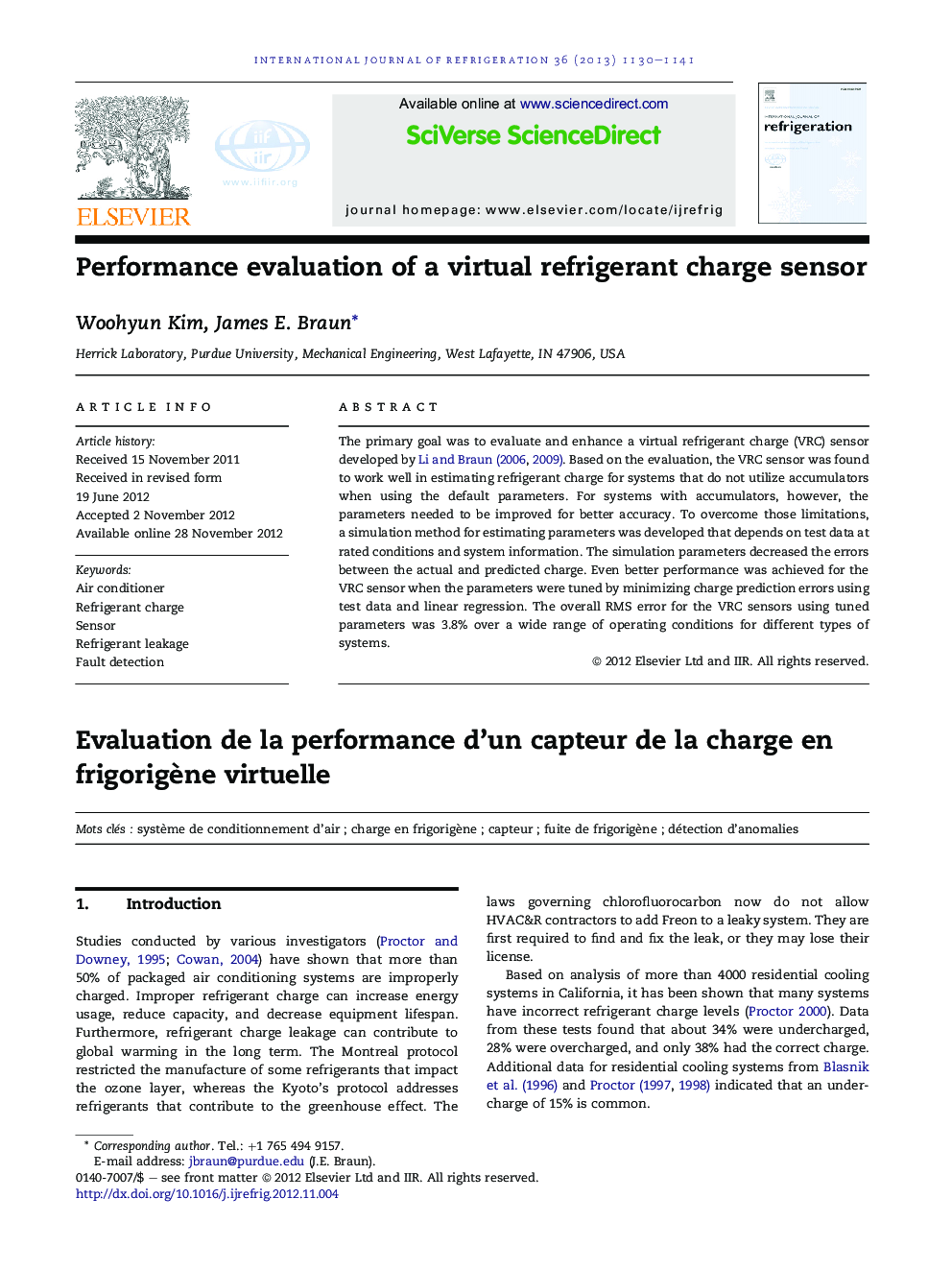| Article ID | Journal | Published Year | Pages | File Type |
|---|---|---|---|---|
| 787012 | International Journal of Refrigeration | 2013 | 12 Pages |
The primary goal was to evaluate and enhance a virtual refrigerant charge (VRC) sensor developed by Li and Braun (2006, 2009). Based on the evaluation, the VRC sensor was found to work well in estimating refrigerant charge for systems that do not utilize accumulators when using the default parameters. For systems with accumulators, however, the parameters needed to be improved for better accuracy. To overcome those limitations, a simulation method for estimating parameters was developed that depends on test data at rated conditions and system information. The simulation parameters decreased the errors between the actual and predicted charge. Even better performance was achieved for the VRC sensor when the parameters were tuned by minimizing charge prediction errors using test data and linear regression. The overall RMS error for the VRC sensors using tuned parameters was 3.8% over a wide range of operating conditions for different types of systems.
► VRC sensor with default parameters works well for systems without accumulators. ► A simulation method for estimating parameters improved performance of the VRC sensor. ► VRC accuracy within 3.8% when using tuned parameters based on all available data. ► VRC sensor is a better approach than existing charge methods because it indicates the amount of charge. ► VRC sensor can detect charge level using six temperature sensors for heat pumps.
